What happened here? Below is a reply which I posted taking issue with a detail in a tweet by the great Hart Group:
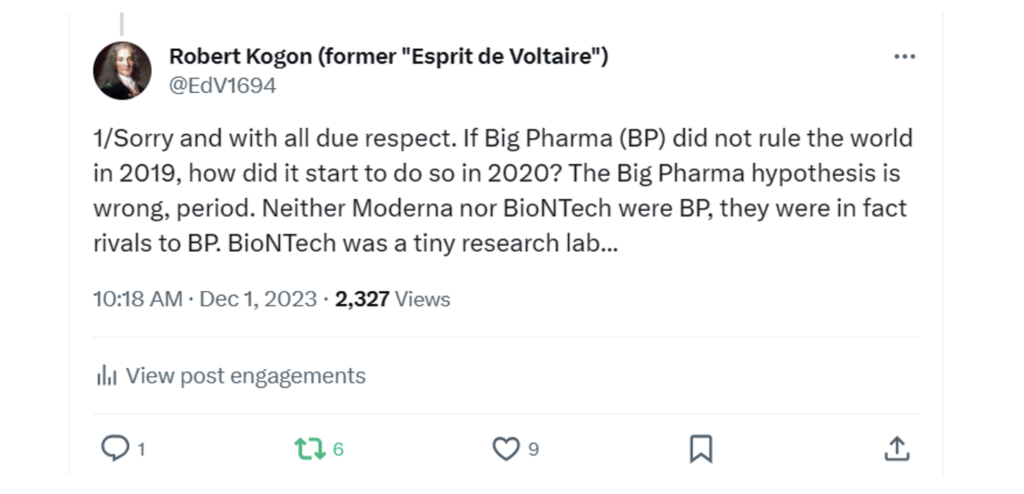
Leaving aside the substance of the tweet, what is significant here is that it was reposted by Thomas Binder, who was tagged in the original Hart tweet, but that his retweet, as can be seen below, did not generate a single additional retweet. The other retweets are either my own or by followers of mine.
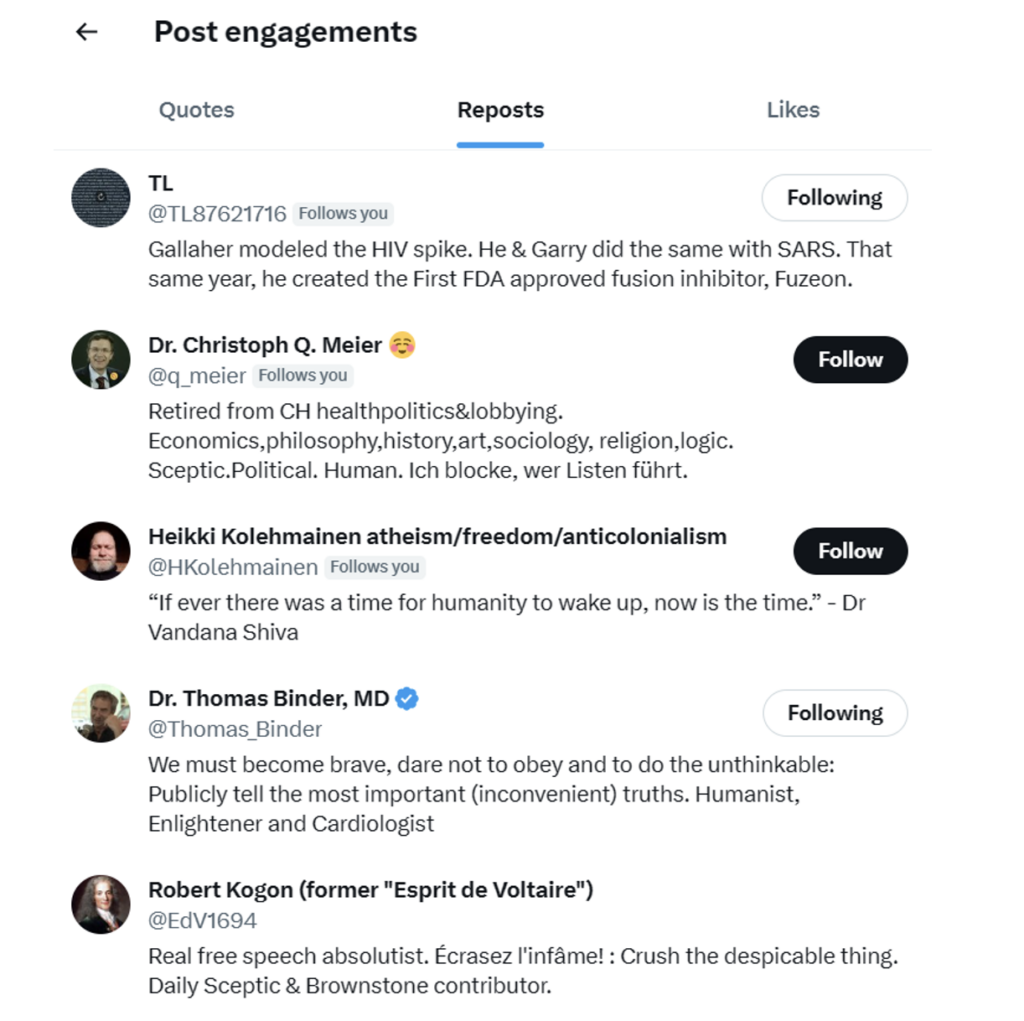
But how is this possible given that Thomas Binder has over 80,000 followers? We all know from experience on Twitter 1.0 that a retweet from a high impact-factor account would have a multiplier effect, generating a series of secondary retweets which would generate further retweets in turn. This was a veritable law of nature on old Twitter. But in this case, the apple did not fall to the ground.
The same exact thing occurred with a tweet of my recent Christmas article on BioNTech’s “gift to God”. It was retweeted by Nick Hudson, whose account again has over 80,000 followers, but this did not have any multiplier effect or indeed any effect at all. There were no additional retweets. Nick was kind enough to call attention to the issue himself the next day: namely, in the quote tweet reproduced below.
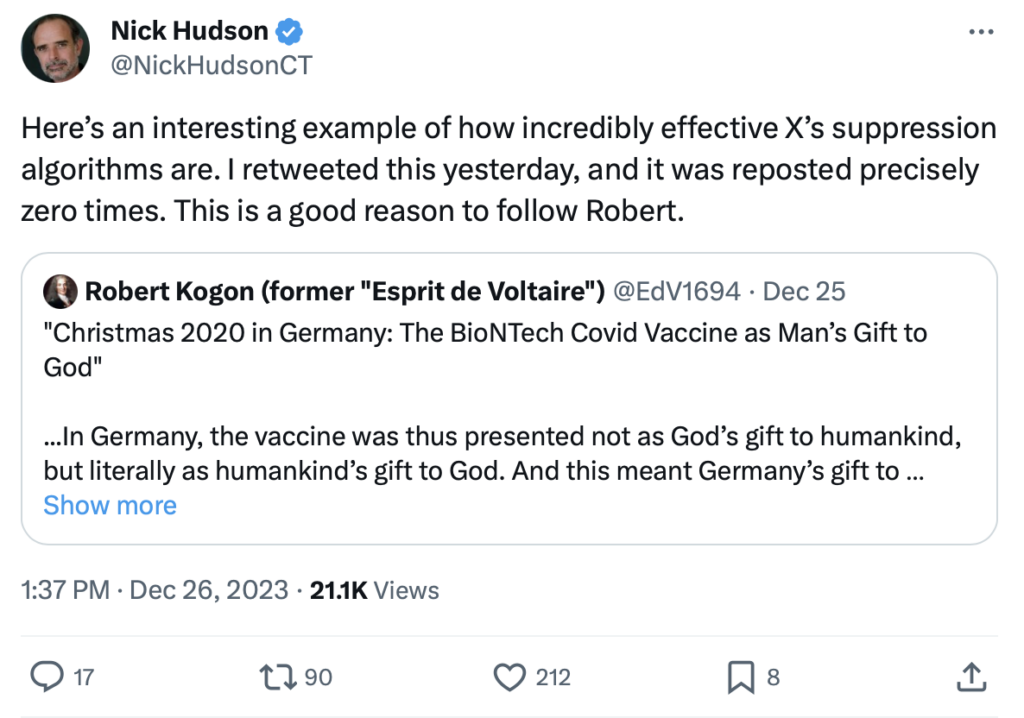
This quote-tweet then generated a ‘normal’ level of engagement from Nick’s followers and presumably followers’ followers and so on, as would be expected. This would appear to teach us that quote-tweeting, as opposed to retweeting, is a way of getting around a visibility filter – at least until X decides that it is not and closes this loophole in its visibility-filtering algorithm.
I have in fact encountered this phenomenon of the apparently unretweetable retweet many times on X in recent months. (Here is another example.)
But why would either of the above tweets be subject to visibility filtering anyway? Why is any given tweet subject to visibility filtering for that matter? On X, we do not know.
We know that X engages in visibility filtering because it says so. See below, for instance, from the X Help Center:
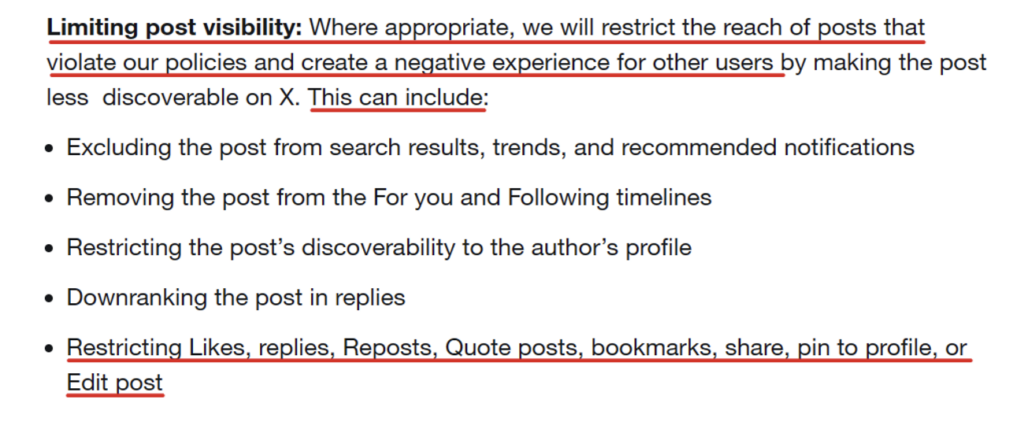
And we know that the X visibility-filtering algorithm includes “safety labels” which are applied to accounts or posts, in order to suppress their reach. These are the labels to which X CEO Linda Yaccarino was alluding when she famously boasted that if users post “lawful but awful” content, they get “labelled and deamplified”.
A selection of ‘safety labels’ which are meant to suppress various forms of ‘misinformation’ can be seen below. They come from the published portion of the Twitter/X algorithm here.

But the difference between these labels and the ‘misleading’ labels which tweets would be hit with on the old Twitter and which could lead to account suspension is that the latter were publicly visible, whereas the new Twitter/X ‘safety labels’ are only visible in the back office. We do not know when X is applying them to our posts or accounts, and hence X has no need to justify their application.
We knew what old Twitter was censoring as ‘misinformation’, and hence we also knew that it was not misinformation or at least could decide for ourselves. We have no idea what is being treated as ‘civic’, ‘crisis’, ‘medical’ or ‘generic’ misinformation on X and hence we have no way of contesting this treatment.
This new system of covert censorship is obviously susceptible to far greater abuse and manipulation by the powers-that-be – for instance, the European Commission, whose censorship demands X is legally required to satisfy under the Digital Services Act – than the old system of (predominantly) open censorship.
Perhaps what is being “labelled and deamplified” are simply politically inconvenient facts.

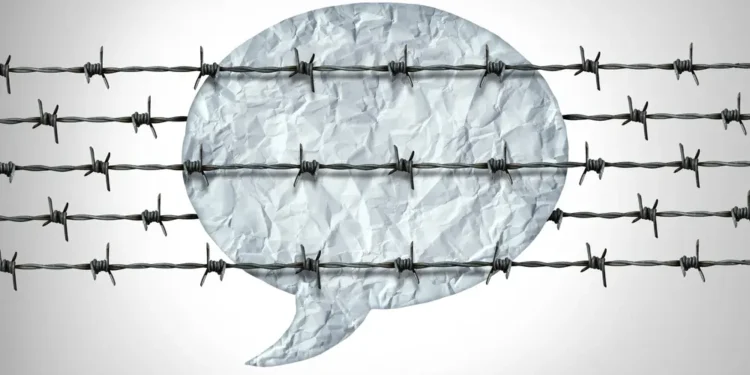












To join in with the discussion please make a donation to The Daily Sceptic.
Profanity and abuse will be removed and may lead to a permanent ban.
Sorry, but don’t do any social media so I have no idea what your talking about with all the twitter twatter and what ever else it’s called. Apologies
Potentially agenda-driven censorship.
How do you find out what is really going on in the world? Do you rely on the BBC, circle of friends or press releases from the heads of public bodies?
Thanks for explaining guys👍
Generally find things out on here and youtube, never watch bbc or rte for any information and when I read headlines on the Internet I take everyone of them with a massive pinch of salt 🧂!
Me neither but apparently it’s the way the government govern and the media broadcast.
It is much the same on the Daily Mail. Occasionally I join in the lively but hugely controlled comments BTL. Usually my comments appear and collect a number of up and down ticks comparable to those received by other commentators with similar remarks. However, once in a while my comment receives precisely zero ticks in either direction. In my profile the comment duly appears, again with zero ticks. There are several possibilities for this bizarre statistical anomaly, mostly involving deliberate selective hiding of comments or manipulation of voting. At least on The Guardian, YT and FB I was informed of the hiding, a pretext or reason and, in the case of The Guardian, I was given the honour of a tombstone engraved wuth “community standards violations”.
The EU Digital Services Act scares me. It is a loud announcement that the EU is a dictatorship that will try to expand its influence beyond its borders. (When did that happen before I wonder…)
And once they’ve announced it loudly and the NPC army accepts it quietly or ignorantly there is no longer any need for pretence.
Really, really frightening.
That EU commissarThierry Breton is a nasty little dictator.
You’ve not highlighted the wider dimension to this. As the EU’s constitution is very much weaker on issues like Freedom of Expression, the leaders of nations with more established protections of individual rights, such as the US, are quietly encouraging the EU to extend the reach of its Digital Services legislation. In this way, they can effectively curb press freedom etc. in ther own countries without the risk of legal challenge.
I would certainly not claim to be a social media expert but i it possible that retweeting has been misused to such a degree by bot accounts, in order to amplify low quality posts, that it has simply been de-ranked as a mechanism. At least with the quote tweet the user is interacting with the post to a higher degree which is more of a sign of quality??
That would be my first guess.
Not to mention that I hardly ever see any posts from people I follow, even frequent Tweeters such as Douglas Murray. Just endless shit about masks and Palestine
The problem here is people whose whole lives are absorbed by social media and think it is the whole Universe.
I could be in a minority who doesn’t give a tish about social media, but maybe I’m not.